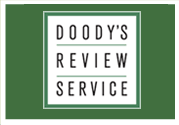|
|
|
eBook/Digital Version available from:
|
 Score: 95
Score: 95 |
 |
| Essentials of Epidemiology in Public Health, 4th Edition |
 |
|
Doody's Core Title (2024 Edition)
|
 |
| Score(s): |
|
2.53
(Health Sciences - Epidemiology)
|
|
 |
ISBN: 978-1-284-12835-2,
528 pages,
Soft Cover
ISBN-10: 1-284-12835-0 |
 |
| Copyright: |
2020 |
 |
| Edition: |
4th |
 |
| Author: |
Aschengrau, Ann, ScD; Seage, George R., III, DSc |
 |
|
Specialties:
|
Epidemiology
, Public Health |
 |
| Publisher: |
Jones & Bartlett Learning |
|
25 Mall Road |
|
Burlington, MA 01803 |
|
UNITED STATES |
|
P: 800-832-0034
F: 978-443-8000 |
|
http://www.jblearning.com |
 |
| List Price: |
$89.95 |
 |
| Google: |
|
|
 |
|
|
|
|
At A Glance
|
Essentials of Epidemiology in Public Health, Fourth Edition combines theory and practice in presenting traditional and new epidemiologic concepts. Broad in scope, the text opens with five chapters covering the basic epidemiologic concepts and data sources. A major emphasis is placed on study design, with separate chapters devoted to each of the three main analytic designs: experimental, cohort, and case-control studies.
This title includes an access code for an accompanying website with supplementary materials. |
|
Reviewer:
|
Homa Sadeghi,
MPH
(University of Iowa College of Public Health)
|
 |
|
Range
|
Question
|
Score
|
| 1-10 |
Are the product's objectives met? |
10 |
| 1-5 |
Does the website help achieve the purpose? |
5 |
| 1-10 |
Rate the worthiness of those objectives. |
10 |
| 1-5 |
Is this directed to an appropriate level? |
5 |
| 1-5 |
Is there significant duplication? (1=significant, 5=insignificant) |
4 |
| 1-5 |
Are there significant omissions? (1=significant, 5=insignificant) |
5 |
| 1-5 |
Rate the authority of the authors. |
5 |
| 1-5 |
Are there sufficient illustrations? |
5 |
| 1-5 |
Rate the pedagogic value of the illustrations. |
5 |
| 1-5 |
Are there sufficient references? |
5 |
| 1-5 |
Rate the currency of the references. |
N/A |
| 1-5 |
Rate the helpfulness of the index. |
5 |
| 1-5 |
Rate the added value from the online version. |
5 |
| 1-5 |
Is the online version easy to access? |
5 |
| 1-5 |
Rate the ease of navigation/search. |
4 |
| 1-5 |
Rate the pedagogic quality of images on the online version. |
N/A |
| 1-5 |
Rate the value of added audiovisual features online. |
N/A |
| 1-5 |
Is there sufficient use of hypertext links? |
5 |
| 1-5 |
Are there hyperlinks from references to journal articles? |
1 |
| 1-5 |
Is there appropriate use of features like bookmarking, printing/exporting? |
5 |
| 1-10 |
Is this a worthwhile contribution to the field? |
10 |
| 1-10 |
If this is a 2nd or later edition, is this new edition needed? |
10 |
|
 |
|
Reviewer:
|
Homa Sadeghi,
MPH
(University of Iowa College of Public Health)
|
 |
|
Description
|
| This is the fourth edition of a book on modern and classical concepts of epidemiology with a comprehensive perspective on both theory and method. It updates the 2014 edition. |
 |
|
Purpose
|
| The aim is to introduce the most updated theories and methods of epidemiology with a focus on research design, statistical analysis, and causal inference. The necessity of understanding the epidemiological concepts and various study designs may be underestimated by students who are new to epidemiology. This book addresses this problem by illustrating the concepts with easy-to-grasp language for new or intermediate students. |
 |
|
Audience
|
| The intended audience is public health graduate students (especially master's level) and practitioners who will either consume epidemiology literature or apply their knowledge in practice. This is a practical resource for those who wish to understand the main epidemiology definitions, study designs, and general statistical concepts. The authors have been teaching introductory epidemiology courses at Boston University and Harvard University for about three decades, and this book is the product of their teaching experience. |
 |
|
Features
|
| The book covers basic epidemiological concepts, data sources, study designs, and some of the most applicable statistical concepts. Epidemiological concepts mainly are about disease determinants and frequency measurements. Observational and experimental epidemiological study designs are covered in four chapters. The introduction of public health data sources enables readers to find the best resources to fit their research interests. A separate chapter about critical review of epidemiological studies is a helpful guide for consumers of epidemiological literature. The fourth edition updates the examples and the data and adds some new sections on the process of investigating infectious disease outbreaks and the latest epidemiological terms and methods. Key terms are highlighted in the text and are clearly defined in the expanded glossary. Epidemiological focus areas such as genetic epidemiology could be added as a brief introduction of epidemiology branches. |
 |
|
Assessment
|
| This book covers the most applicable epidemiological concepts concisely and clearly. Key features include the guide to critical appraisal of epidemiological studies, the introduction of confounding and effect modification in analytical studies, and information on major data sources in public health. Compared to other introductory epidemiology books (such as Gordis Epidemiology, 6th edition, Celentano and Szklo (Elsevier, 2019), this one is easier to understand and covers some additional topics such as effect modification. However, some more in-depth topics such as measure of agreement can be supplemented by other books. The remarkable updates justify this fourth edition. |
 |
|
|
|
|
|
|
|
